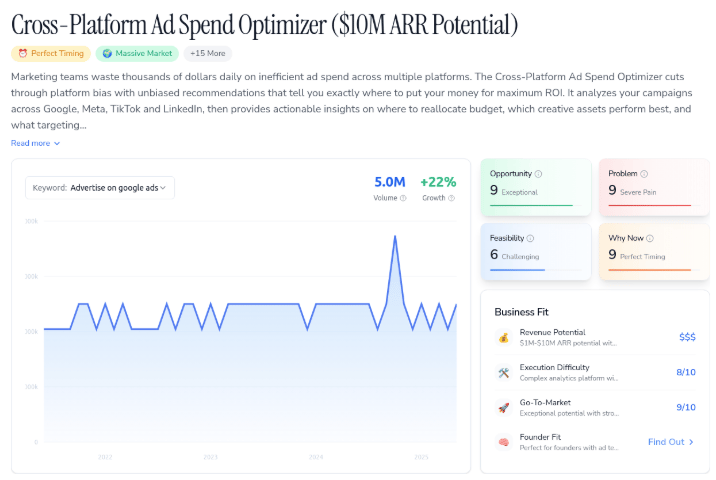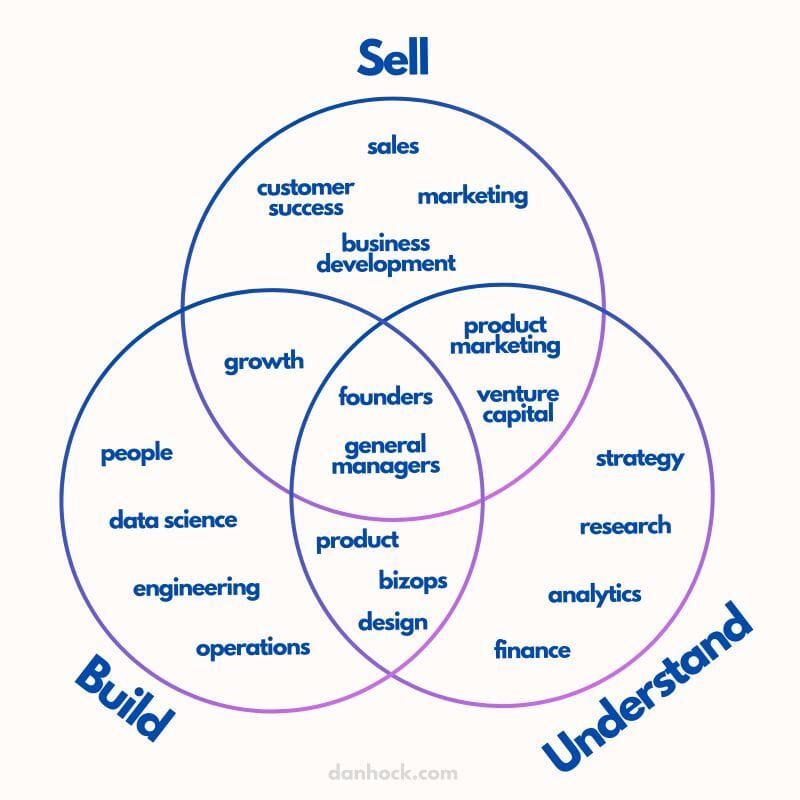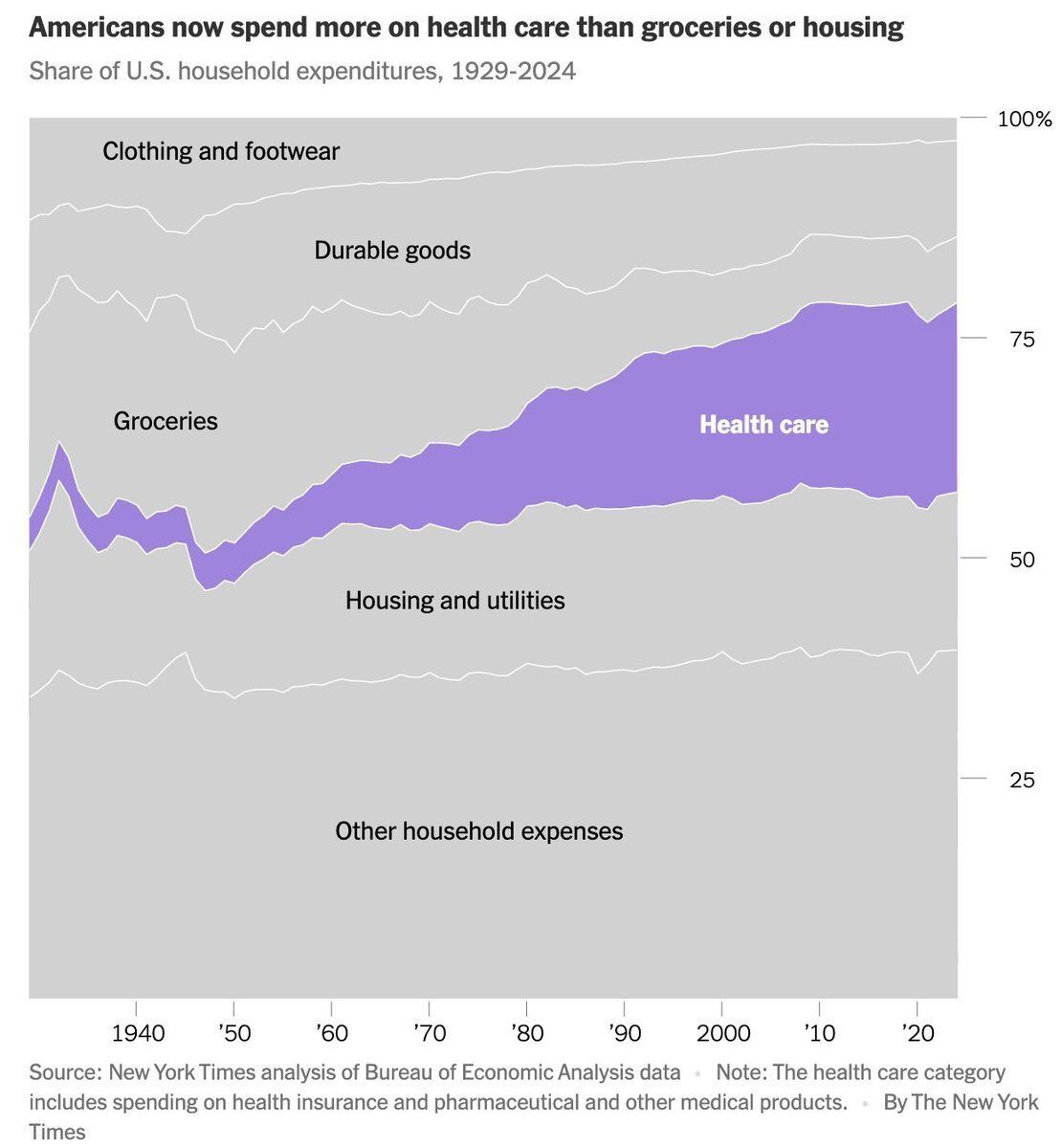- Founding Journey
- Posts
- Build, Sell, Understand
Build, Sell, Understand
And why focus is your advantage
Hey y’all — here’s today at a glance:
Opportunity → Cross-Platform Ad Spend Optimizer
Framework → Build, Sell, Understand
Tool → Civic
Trend → American Healthcare Spend
Quote → Focus Is Your Advantage
PS — Become a member to get access to my founder membership including an engaged community, fundraising support, fireside chats and more.

Left this week’s issue ad-free as a thank you to y’all for continuing to read and support this newsletter!
We’re coming up on three years of Founding Journey and plan to keep it going for many more.
In fact, we have some fun announcements coming up before the end of the year. Keep your eyes open…
Want to stop seeing ads? Upgrade now. Want to get in front of 75,000+ founders? Go here.

🔗 Houck’s Picks
My favorite finds of the week.
Fundraising
Growth
ICYMI
Hire experienced devs in 48 hrs. starting only from $40/hr (Link)*
Kunal Bahl on the foundation of great companies (Link)
Aaron Levie on the trillion dollar AI agent opportunity (Link)
Alexis Ohanian on what the real founder superpower is (Link)
Steven Cravotta on the biggest mistake app founders make (Link)

💡 Opportunity: Cross-Platform Ad Spend Optimizer
Ever used Meta’s Ads Manager?
I’ve spent a lot of time in there over the last few years as we’ve grown Founding Journey.
It’s a behemoth.
Settings pages hidden inside settings pages.
Access needing to be granted for multiple layers.
Payment methods added in multiple places.
The funny part is that this leads to larger teams being needed to manage ad spend across an entire business, and this leads to it being harder for any one person to have a good sense of how effectively budget is being allocated in total.
At the end of the day, almost every company (especially larger ones with money to spend) are wasting thousands and thousands of dollars by putting it in the wrong channels, the wrong campaigns, and behind the wrong creative.
So why not build a tool that analyzes performance across all your paid channels and recommends what changes to make?
I’d start with a simple, no frills MVP targeted towards relatively early stage startups or solopreneurs that are experimenting with channels to try and find the right fit.
Then, over time, build out the feature set and go upmarket to enterprise customers who have large teams and struggle to get clarity on their spend. This is the real opportunity here — but these types of customers will take a while to close.

If you do it right it can even recommend tweaks to your creative. For example, Meta’s ad libraries for all ad accounts are publicly available. Have the tool scrape them and assess ways to improve your users’ assets as a feature of the tool.
🧠 Framework: Build, Sell, Understand
If you’re trying to build a career in startups, Dan Hock’s framework says you have to choose:
Build (eng, ops, etc)
Sell (sales, marketing, biz dev, etc)
Understand (research, strategy, analytics, finance, etc)
You probably can only get trusted to do one of these things initially. Maybe you’re a designer which straddles Build and Understand, sure, but the majority of people will get grouped into one.

Over time, you find roles like “growth” and “product” that truly straddle multiple categories.
And eventually maybe you rise up the ranks and become a General Manager of a business unit at a big tech company, where you’re trusted to wear all three hats.
But!
For you reading this newsletter right now, as a founder, you don’t have that luxury.
You need to do all three from Day 1.
Equally importantly, you need to evaluate when to hire people for each of these and how well candidates will perform… even though you’re probably not an expert in each field.
What is similar between the founder and the early career employee’s choices, though, is that they are driven by an understanding of their own strengths.
For founders, you need to be aware not just of what roles the business calls for at its current stage in a vacuum, but specifically what it calls for with you at the helm.
If you’re best at sales, run with founder-led sales as long as possible.
If you’re best at engineering, maybe invest more in hiring a top-tier designer or marketer.
You get the idea.
This framework is just a good reminder that you probably fit best, and can help the business best, by focusing on one of these three as much as possible (even if, as a founder, you’ll always have to do a little bit of all three).
🛠 Tool: Civic Auth
Vibe code your way to login in 5 minutes — even if you barely code. With LLM-assisted prompts, Civic Auth makes setup effortless.
It’s free for your first 15,000 MAUs — perfect for early traction. Hackers and founders have already trusted it in 200+ hackathon projects this year.
Seamless SSO, custom branding, and optional embedded wallets mean your login just blends in.
Launch faster and scale smarter — because great products deserve invisible, frictionless auth.*
📈 Trend: American Healthcare Spend
Healthcare is big business in America.
So big that the average adult spends more on it per year than basically any other single expense category.

Ironically, noticing this is causing people to want to spend more now… but just in a different way, and in an effort to have to spend less later.
I actually think this is a big reason why we’ve seen the “longevity” trend spike so much over the last few years, and the rise of Bryan Johnson, etc.
Companies like Generation Lab are already taking advantage of this by offering proactive healthcare solutions rather than the traditional, reactive model.
No more waiting to get sick to get treatment — instead, people are planning ahead so they never get sick in the first place.
It’s still early days here.
I expect we’ll see more specialized, verticalized options emerge over the next 12-24 months.
The bet here is that we’ve historically built half a healthcare system and yet treated it like a full one. So the opportunity now is to build the other, proactive half.
💬 Quote: Focus Is Your Advantage
If the world feels like it’s moving faster, it’s because it is.
AI has changed everything — this is clear at this point.
The rate of societal progress has been on an exponential growth curve since at least the industrial revolution, which means that not only are things accelerating, but the rate at which they are accelerating is also accelerating.
Example A: it’s no longer enough to build a great product — software is no longer a moat.
This scenario puts more emphasis on the things that are under your control, like your level of commitment and focus.
No shiny object syndrome.
No roller coaster of emotions.
Just consistently getting things done.
That’s how you stay ahead of the competition in this new world.
Your ability to stay focused and optimized when nothing is going your way is your competitive advantage.
— MATT GRAY (@matt_gray_)
12:09 PM • Jul 14, 2025

How We Can Help
Become a member to get full access to our case study library, private founder community, and more.
We can also help your startup in a few other ways:
Content CreationLet my team and I ghostwrite for your newsletter, X, or LinkedIn. | Audience BuildingGrow your audience + generate leads with my growth service. |
FundraisingShare your round with hundreds of investors in my personal network. | AdvisingI’ll help solve a specific challenge you’re facing with your startup. |
Advertise in this newsletter to get in front of 75,000+ founders.

“*” indicates sponsored content.
Reply